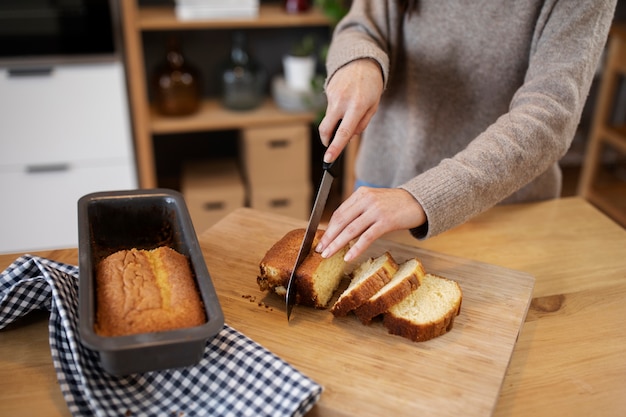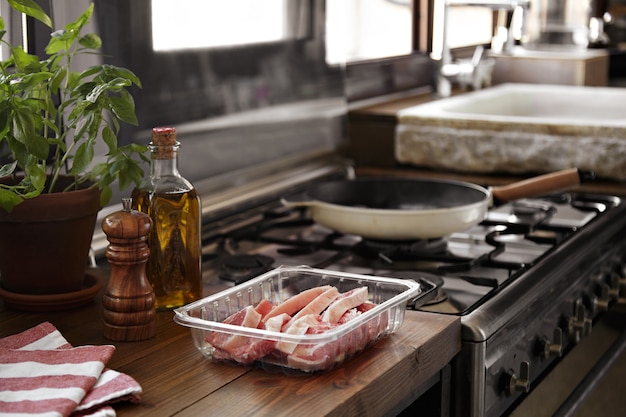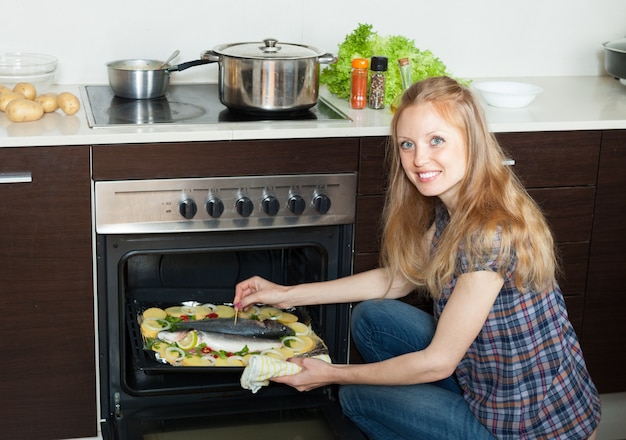Ah, the roast. A culinary masterpiece, the centrepiece of countless Sunday dinners and festive feasts. But mastering that perfect roast, that golden-brown, succulent piece of meat that melts in your mouth, can feel like a culinary puzzle. I've been there, staring at a massive hunk of beef, wondering if it's destined to be a dry, tough disaster or a juicy, tender triumph. And believe me, I've had my fair share of both!
But fear not, fellow roast enthusiasts! After years of trial and error (and a few questionable dinner parties, let's be honest!), I've cracked the code to consistently achieving that perfect roast. It’s all about understanding the science behind the roast, the different cuts of meat, and the magic of temperature. So, grab a cuppa, get comfy, and let’s dive into the world of roast cooking time.
(Part 1) Understanding the Science of Roasting

Roasting is a dry heat cooking method, meaning we use hot air to cook our food. This process involves a few crucial elements:
1. Heat and Temperature: The Double Act
Heat is our culinary ally! It cooks the meat, creates that irresistible browning, and extracts those luscious juices. But, too much heat, and you risk burning the exterior before the interior is cooked through. That’s where temperature control comes in, my friends.
For a well-balanced roast, a moderate temperature of around 180°C (350°F) is usually ideal. This ensures even cooking from the outside in. However, for that truly impressive, crispy crust, consider starting with a higher temperature – around 220°C (425°F) – for the first 15-20 minutes. This initial sear seizes the juices and gives you that gorgeous browning. Then, reduce the temperature to maintain a steady cooking process.
2. Time and Doneness: The Crucial Relationship
This is where it gets a bit more intricate. The time it takes to cook your roast depends on its size and thickness, the type of cut, and the level of doneness you desire.
For example, a small, thin roast will cook much faster than a large, thick one. And, a lean cut of meat, like chicken breast, will cook more quickly than a fatty cut, like beef brisket.
The key here is to cook the meat to the right internal temperature. This ensures food safety and helps us achieve that melt-in-your-mouth tenderness. We'll delve deeper into specific doneness temperatures later on.
3. Resting: The Importance of Recovery
Think about it this way: after a vigorous workout, you need time to cool down and recover, right? It’s the same with your roast!
Once your roast is cooked through, give it a well-deserved rest for at least 15-20 minutes before carving. This allows the juices to redistribute throughout the meat, creating a much more tender and flavorful final product. It’s a simple step, but it makes a world of difference.
(Part 2) Choosing the Perfect Cut: A culinary adventure

Now that we've covered the fundamentals, let's talk about picking the right cut of meat. This is where your roast truly comes alive! Think of it like selecting the perfect wine for a meal – it can make or break the experience.
Beef: The King of Roasts
Beef, the undisputed king of roasts! It offers a diverse range of cuts, each with its own unique flavour and texture. Let's explore a few favourites:
- rib roast: A classic choice, celebrated for its marbling and rich, satisfying flavour. It’s perfect for a special occasion or a big family gathering, guaranteed to impress.
- sirloin roast: A leaner and more affordable option, with a slightly firmer texture. Ideal for a weeknight dinner or a smaller group, it’s versatile and delicious.
- chuck roast: A flavorful and budget-friendly choice, known for its tenderness after slow cooking. It’s perfect for a hearty pot roast, packed with flavour and comfort.
- top round roast: A lean and versatile cut, great for grilling or roasting. It’s often used for roast beef sandwiches or salads, offering a lean and satisfying protein.
Lamb: A Delicate Delight
Lamb brings a delicate flavour and a hint of gameiness, making it a popular choice for spring and summer meals.
- Leg of Lamb: The classic roast, known for its tenderness and flavour. Perfect for a special occasion or a large gathering, it’s a truly impressive dish.
- Shoulder of Lamb: A more flavorful and budget-friendly option, with a slightly firmer texture. It’s great for roasting whole or for making a delicious lamb stew.
- rack of lamb: A luxurious and impressive choice, renowned for its succulent chops. Perfect for a romantic dinner or a small gathering, it’s a truly special treat.
Pork: The Sweet and Tender Option
pork roasts are often sweet and tender, perfect for a family meal. They offer a great balance of flavour and versatility.
- pork loin roast: A lean and versatile cut, great for roasting whole or for making pork chops. It’s perfect for a weeknight dinner or a smaller group, offering a quick and easy meal.
- pork shoulder roast: A flavorful and budget-friendly option, known for its tenderness after slow cooking. It’s perfect for making pulled pork or a delicious roast, offering a melt-in-your-mouth texture.
Chicken: The Versatile Choice
Chicken roasts are a lighter and more versatile option, perfect for a weeknight meal or a casual gathering. They're easy to cook and offer a healthy and delicious option.
- whole chicken: A classic choice, great for roasting whole or for making individual chicken parts. It’s a versatile option that can be prepared in numerous ways.
- Chicken Breast: A lean and versatile cut, perfect for roasting, grilling, or baking. It's a great option for a quick and healthy meal.
(Part 3) Seasoning and Marinades: Unleashing Flavour

The right seasoning and marinade can truly elevate the flavour of your roast. It’s a chance to get creative in the kitchen and experiment with different flavour profiles.
1. Simple and Classic: Sometimes, Less is More
A simple sprinkle of salt and pepper can really enhance the natural flavour of the meat. You can also add a touch of garlic powder, onion powder, or paprika for a bit more depth. Keep it simple, let the meat shine!
2. Herbs and Spices: A Culinary Symphony
Herbs and spices add another dimension to your roast. Fresh herbs like rosemary, thyme, oregano, or sage create a beautiful aroma and flavour. Experiment with spices like cumin, coriander, or chili powder for a bolder flavour profile.
3. Marinades: The Flavour Infusion
Marinades are a fantastic way to infuse your roast with flavour and tenderness. A simple marinade with olive oil, lemon juice, and herbs can be a perfect starting point. For a more adventurous flavour, try soy sauce, honey, and ginger.
Remember, the longer you marinate your roast, the more flavour it will absorb.
(Part 4) roasting time and Temperatures: Cracking the Code
Now, let's get to the heart of the matter, the crucial element in perfecting your roast: roasting time and temperatures.
Remember, the following table is a guideline. You may need to adjust the cooking time based on the size and thickness of your roast, the type of cut, and your desired level of doneness.
| Type of Roast | Weight (kg) | Cooking Time (mins/kg) | Internal Temperature (°C) |
|---|---|---|---|
| Beef (Rib Roast) | 2-3 | 20-25 | 52-57 (medium rare) |
| Beef (Sirloin Roast) | 1.5-2 | 20-25 | 52-57 (medium rare) |
| Lamb (Leg of Lamb) | 1.5-2 | 25-30 | 55-60 (medium) |
| Pork (Loin Roast) | 1-1.5 | 20-25 | 63-68 (medium) |
| Chicken (Whole Chicken) | 1-1.5 | 30-40 | 74-79 (well-done) |
(Part 5) Monitoring Doneness: The Art of Precision
You’ve chosen your cut, seasoned it with care, and popped it into the oven. Now, how do you know when it’s reached culinary perfection?
There are a few methods to check doneness:
1. meat thermometer: The Ultimate Judge
This is the most accurate way to check doneness. Insert the thermometer into the thickest part of the roast, ensuring it doesn’t touch any bone. The internal temperature should reach the desired level for your chosen cut and doneness.
2. Touch Test: A Hands-On Approach
This is a bit more subjective, but it can be helpful. Press the roast with your finger.
- Rare: The roast will feel soft and springy.
- Medium Rare: The roast will feel slightly firmer, but still soft.
- Medium: The roast will feel firm to the touch.
- Medium Well: The roast will feel very firm.
- Well-Done: The roast will feel very hard and dry.
3. Visual Clues: A Culinary Eye
While not as precise as a thermometer, you can also use visual cues to gauge doneness.
- Rare: The roast will have a dark red center.
- Medium Rare: The roast will have a pink center.
- Medium: The roast will have a light pink center.
- Medium Well: The roast will have a very light pink center.
- Well-Done: The roast will have a gray center.
(Part 6) Basting and roasting techniques: Enhancing the Experience
Let’s delve into some techniques that can elevate your roast to a whole new level of deliciousness.
1. Basting: The Moisture Boost
Basting is a technique that involves pouring the juices from the roast over the top during cooking. This helps to keep the meat moist and adds a beautiful golden-brown crust.
Use a spoon or a basting brush to generously baste the roast every 20-30 minutes for a truly succulent result.
2. Roasting Vegetables: A Culinary Companion
Why not add some roasted vegetables to your roast? Roasting vegetables alongside your meat is a fantastic way to add flavour, nutrients, and visual appeal to your meal.
Choose vegetables that roast well, such as potatoes, carrots, onions, or Brussels sprouts. Let them soak up those delicious roasting juices for a truly satisfying experience.
3. Adding Herbs and Spices: A Touch of Magic
Don’t be afraid to get creative with herbs and spices! You can add fresh herbs to the roasting pan or create a delightful herb butter to spread over the roast.
(Part 7) Resting and Carving: The Final Touches
As we discussed earlier, resting your roast after cooking is absolutely crucial! It allows the juices to redistribute throughout the meat, resulting in a much more tender and flavorful final product.
Give your roast a well-deserved rest for at least 15-20 minutes before carving.
Carving: The Art of Slicing
Now, the moment of truth!
Use a sharp carving knife and a carving fork to slice the roast against the grain. This will help to create tender and juicy slices.
Serve your roast with your favorite sides and enjoy the fruits of your culinary labour!
(Part 8) Leftovers and Storage: Making the Most of Your Roast
Who doesn’t love a delicious roast leftover?
If you have leftovers, refrigerate them in an airtight container for up to 3-4 days.
You can reheat the leftovers in the oven, microwave, or pan-fry them.
And let’s not forget, leftovers are the perfect starting point for a delicious sandwich, salad, or even a hearty soup.
FAQs: Answering Your Roast-Related Queries
Let’s tackle some common roast-related questions:
1. What happens if my roast is overcooked?
Unfortunately, if your roast is overcooked, it will become dry and tough. There’s not much you can do to fix it, so it’s best to try to prevent overcooking in the first place by carefully monitoring the internal temperature.
2. Can I freeze a roast?
Yes, you can freeze a roast for up to 3-4 months. Be sure to wrap it tightly in plastic wrap or aluminum foil, and then place it in a freezer-safe bag. To ensure best results, thaw it slowly in the refrigerator before cooking.
3. How do I know if my roast is cooked through?
The best way to check if your roast is cooked through is to use a meat thermometer. It should reach the desired internal temperature for your chosen cut and doneness.
4. What if my roast is too salty?
If your roast is too salty, there’s not much you can do to fix it. However, you can try to dilute the saltiness by serving it with a side dish that has a lot of flavor, like a creamy sauce or a sweet potato casserole.
5. How can I make my roast more flavorful?
You can make your roast more flavorful by using a marinade, adding herbs and spices, or basting it during cooking. You can also roast your vegetables alongside your meat, which will add a delicious flavour to your meal.
Everyone is watching

Corn on the Cob: The Ultimate Guide to Perfectly Cooked Ears
Healthy MealsAh, corn on the cob. Just the name evokes images of sunny days, barbecues, and that sweet, juicy flavour that ...

Perfect Pork Roast Oven Cooking Time: A Guide to Delicious Results
Healthy MealsThere's something truly satisfying about a perfectly roasted pork. The aroma alone is enough to make your mout...

Ham Cooking Time: How Long to Bake, Smoke, or Boil a Delicious Ham
Healthy MealsAh, ham. It's a classic, isn't it? A real crowd-pleaser, especially around holidays. And when done right, it'...

Scallops: The Ultimate Guide to Perfect Cooking
Healthy MealsAh, scallops. Those delicate, sweet, and utterly delicious morsels of the sea. They hold a special place in my...

Spaghetti Squash: The Ultimate Guide to Cooking and Serving
Healthy MealsRemember that time you saw spaghetti squash at the supermarket, looking all bumpy and strange, and thought, "W...
